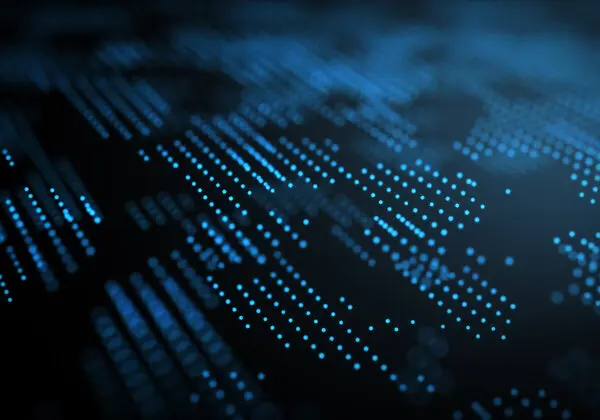Bio-Queue
Monitor the flow of passengers through the airport using face recognition to measure queue and transit times

The Advantages of Facial Recognition
With some form of social distancing set to enter the KPI’s, closer analysis of queues at key entry points, waypoints and exits provides the basis for better decisions on how to prioritise efforts to keep people flowing through the terminal
This application of face recognition AI can use existing enrolments to identify individual passengers or it can be used anonymously, capturing data on people joining and leaving queues to highlight high-density hotspots.
This method of data capture is more cost effective to deploy and re-configure when physical changes to the airport layout are required.










How it works
Bio-Queue works in three stages:
Stage 1
Capture
Cameras placed in open areas or at control points capture individual faces at very high penetration rates, with optimal results delivered through our infrared camera system. Each camera feeds images directly into a small form-factor controller PC located nearby for initial frame processing from one or more cameras. This reduces the number and size of packets sent to the server, maximising speed and efficiency through minimising bandwidth.
Face Detection
Each camera frame is analysed to detect faces. If preliminary analysis indicates there is enough detail for them to be used for face recognition, they pass to the next stage, otherwise they are rejected.
Face Cropping
Faces with sufficient detail are cropped from the original image, ready to be passed to the next stage, with each crop typically between 3Kb and 6Kb.
Templification
The system creates a biometric facial template from each cropped face image where possible. This process involves more detailed quality checking of facial features, leading to some faces being rejected at this stage. The size of an infrared biometric template is 1Kb.
Forward to Server
The system can be configured to send just templates to the server or templates and the cropped image from which they have been generated. In either case, these data packets, which are small compared with streaming live frames directly to the server, are stamped with the time, camera identifier and camera location.
Stage 2
Process
The main tasks associated with image processing are performed on the server, with the potential to distribute these tasks across several servers, depending on requirements.
Reception
Image templates are received with minimal lag, with initial processing already having been carried out locally following capture.
Recording
Templates are recorded in a SQL Server database with a unique identification code that contains data on capture camera, location and timestamp. The template and, if present, the face image from which the template was generated, can be saved to binary storage for later retrieval.
Searching
Each template recorded will be used as a probe image to be searched against the current cache of face templates. If there is a match, this will be recorded in the database to provide data for queue measurement statistics.
Caching
Following the search process, templates are added to the current cache so that subsequent captures of an individual can be matched to previous images from earlier in their journey through the airport.
Statistics
Data from matches and timestamps is used to calculate and record progression of passengers. This module can be configured to allow for measurements to be provided on an individual or aggregated basis as required.
The user interface provides clients with access to system settings, enabling cameras and their locations to be registered, and entry points, waypoints and exits to be defined. It also provides the means to configure alerts, dashboards and reports, which can be integrated with the airport’s passenger management service.
Stage 3
Monitoring
The user interface provides clients with access to system settings, enabling cameras and their locations to be registered, and entry points, waypoints and exits to be defined. It also provides the means to configure alerts, dashboards and reports, which can be integrated with the airport’s passenger management service.
System Requirements

Software
The dedicated, configurable Bio-Queue system uses the Face Recognition SDK, and is licensed on an annual basis, with options available depending on the volume of passenger traffic and cameras required. Capture Software for the camera-controller PCs is also licensed annually on a per machine basis. Bio-Queue can also be used with third party CCTV cameras as well as our specialist face recognition cameras.
Hardware
We recommend using the infrared cameras, designed to work with the infrared face recognition engines, with both the Psiloc and Cube models suitable for this application.
The system requires networked, small form-factor PCs associated with each camera for template caching and control.
At least one dedicated server is required for Bio-Queue.


Infrastructure
Bio-Queue can be deployed as a “stand alone” system or use enrolment data from the host passenger management system. Specialist facial recognition cameras are recommended for use, but Bio-Queue can also operate with 3rd party CCTV cameras subject to certain image quality criteria, or a combination of the two. In all cases a central server will be required for the management of templates.
In this application a number of cameras may be required to cover a large area and Bio-Queue has been designed to meet this challenge, with biometric template images being very small to minimise network traffic, even when processing a very large number of passengers.
Contact us to start your AI journey today

A deeply trusted, expert partner
It's never been done before and will change the category."
Smith & Nephew
GSMA
We are the AI partner for business








Let us solve your impossible problem
Speak to one of our industry specialists about how Artificial Intelligence can help solve your impossible problem














